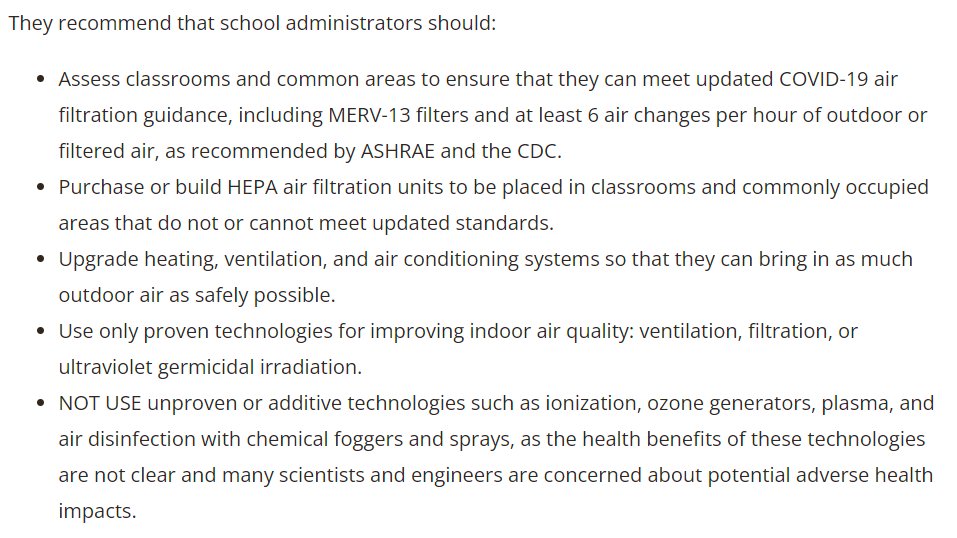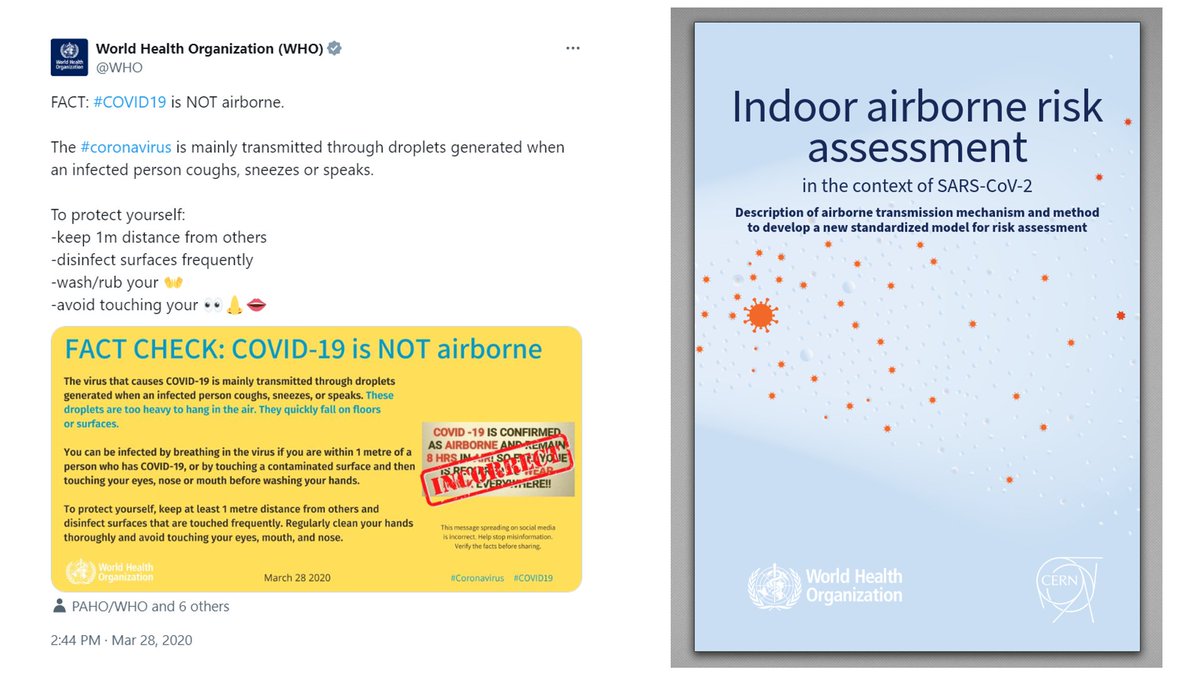The air cleaner purchased by @nseducation for schools has a Clean Air Delivery Rate almost HALF of a common retail unit and may create secondary products by reacting with gas phase contaminants in a poorly ventilated room using photocatalytic oxidation #nspoli /1 
https://twitter.com/MWES_School/status/1480586633867149324

As seen in the photo, it's not running on its highest setting. For #ventilationequity in non-mechanically ventilated classrooms, should be a min 15 CFM per person, or 375 CADR for 25 people, AND at an acceptable noise level. How many per classroom? #DoTheMath! /2
Don't get me wrong, any filtration is better than nothing! But it's a mere band-aid over a gaping wound.
A DIY $120 #corsirosenthalbox will beat the air cleaners purchased by @nseducation AND can be used in STEM lessons! See cleanarair.com /3
A DIY $120 #corsirosenthalbox will beat the air cleaners purchased by @nseducation AND can be used in STEM lessons! See cleanarair.com /3

On the product claims of ActivePure® technology "to reduce over 99.9% of many common contaminants in the air and on surfaces", Dr. Brent Stephens who runs the Built Environment Research Group, has umm, "done the research". Link: built-envi.com/what-air-clean… /4 

But what about the use of photocatalytic oxidation? There are questions about chemicals that can be inadvertently created from this. I'll refer to the experts who wrote an open letter: medium.com/open-letter-to… /5
We should be requesting independent monitoring of the chemical composition of secondary products in both gas and particle phases in the rooms where these devices have been installed. You know, precautionary principle? /6
https://twitter.com/ShellyMBoulder/status/1422695143946133504?s=20
Stick with layering the basic triad of engineering controls:
#Ventilation
#Filtration (#FilterFitFlow)
#UVGI
please hold the bells & whistles /7
#Ventilation
#Filtration (#FilterFitFlow)
#UVGI
please hold the bells & whistles /7

Similar advice is from Johns Hopkins Center for Health Security in their letter released today.
#Ventilation 6ACH #Filtration MERV-13, #UVGI, #HEPA or build #Corsirosenthalbox, don't use unproven additive technologies: centerforhealthsecurity.org/news/center-ne… /8
#Ventilation 6ACH #Filtration MERV-13, #UVGI, #HEPA or build #Corsirosenthalbox, don't use unproven additive technologies: centerforhealthsecurity.org/news/center-ne… /8

Take solace my NS friends, because your neighbors
@NLESDCA bought at least 3000 of the smaller Aerus Pure & Clean for schools, with a max flow of only 60 CFM (and presumably lower actual CADR rating, if it even qualified for the AHAM test) /9
@NLESDCA bought at least 3000 of the smaller Aerus Pure & Clean for schools, with a max flow of only 60 CFM (and presumably lower actual CADR rating, if it even qualified for the AHAM test) /9
https://twitter.com/joshpascoe/status/1435700376309796870?s=20
Update on the cost: Nova Scotia spent $2.3M for 1600 units, or $1438 each. Compare with the Honeywell unit from Canadian Tire that has nearly twice the verified air cleaning performance for $329. globalnews.ca/video/8501732/… /10
If the Beyond Guardian Air was quieter, that might be worth the much higher cost, but it's not. It's the same noise level at full speed with almost half the air cleaning power as a much less expensive Honeywell. /11 

There is a wide variety of air cleaners available. Many have significantly less noise and/or significantly more Clean Air Delivery Rate. @marwa_zaatari has collected info on many of them and their cost (USD) and noise level here: /12
https://twitter.com/marwa_zaatari/status/1439101884229423106?s=20
Prof Jeffrey Siegel @IAQinGWN weighs in with this 7-minute interview, and I fully agree. While this unit might create byproducts using PCO, it's not as problematic as being undersized for a classroom without mechanical ventilation. Listen here: /13 cbc.ca/listen/live-ra…
@IAQinGWN These air cleaners are covered in this article /14 saltwire.com/atlantic-canad…
@IAQinGWN Summary table (excluding maintenance costs and the concerns about secondary products formed by Aerus' photocatalytic oxidation), includes suggested number of units for typical non-mechanically ventilated classroom. Take-home: Aerus is 8x higher cost. /15 

• • •
Missing some Tweet in this thread? You can try to
force a refresh


![States high levels of CO2 and other contaminants ... can contribute to [list of five health effects, such as headaches, fatigue, difficultly concentrating], says CO2 should be below 1000 ppm, then says (incorrectly) that health effects from CO2 occur at levels above 5000 ppm. No, those effects can occur below 5000 ppm. It also states the CO2 concentrations do not indicate a risk of infectious disease transmission in a space. No, ASHRAE's position statement on CO2 states that elevated CO2 concentrations CAN reflect higher risk. Obviously, because it indicates poor ventilation, which IS an i...](https://pbs.twimg.com/media/GO6z_36WQAI7_mj.jpg)







